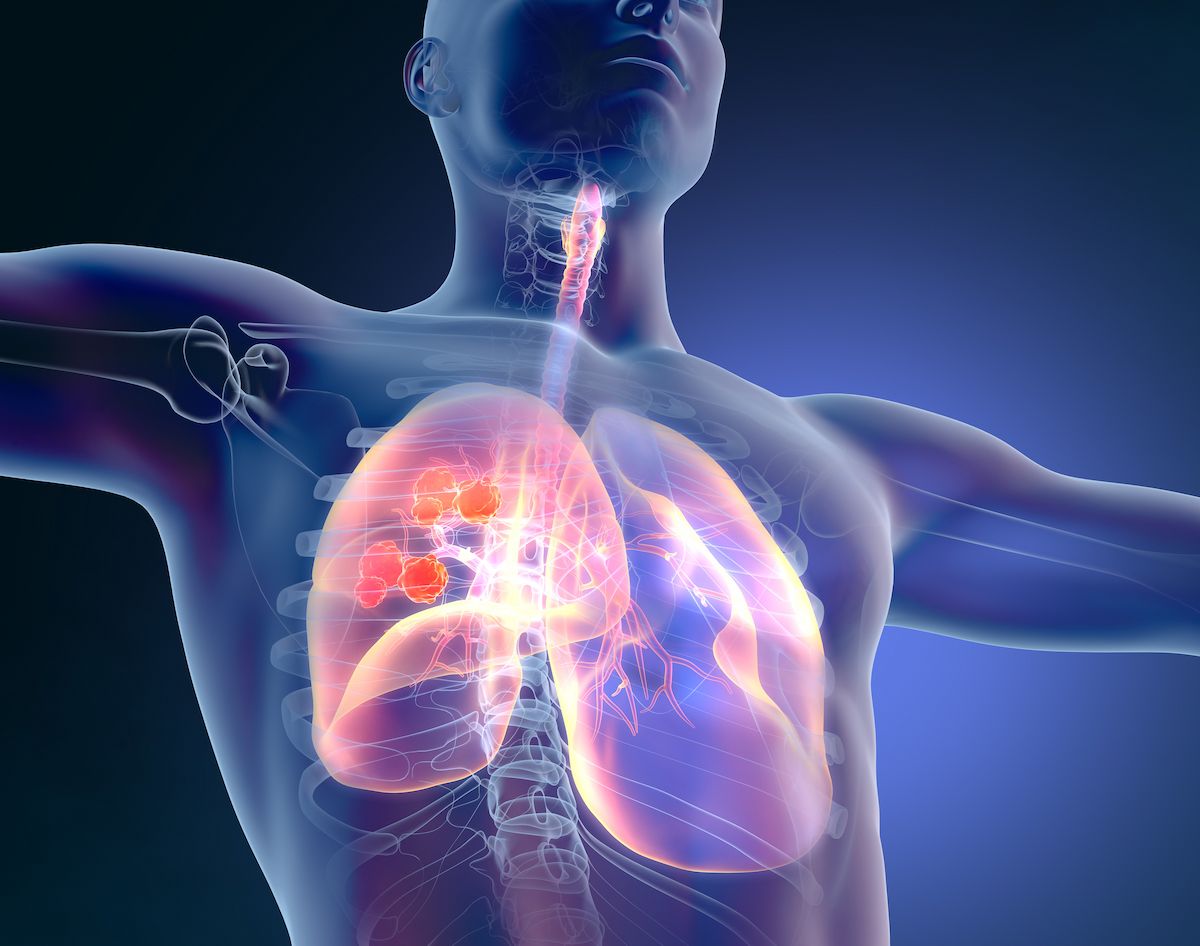FDA Grants Fast Track Designation to IBI363 in Pretreated Squamous NSCLC
IBI363 demonstrated encouraging efficacy and a manageable safety profile in patients with squamous NSCLC based on results from a phase 1 trial.
IBI363 demonstrated encouraging efficacy and a manageable safety profile in patients with squamous NSCLC based on results from a phase 1 trial.

IBI363, a first-in-class PD-1/IL-2α-bias bispecific antibody fusion protein, received fast track designation from the FDA for the treatment of patients with unresectable, locally advanced, or metastatic squamous non–small cell lung cancer (NSCLC) who progressed on prior anti–PD-(L)1 immune checkpoint inhibitor therapy and platinum-based chemotherapy, according to a press release from the developer, Innovent.1
A presentation at the 2024 World Conference on Lung Cancer on a phase 1 trial (NCT04085185) that evaluated IBI363 in NSCLC supported the FDA’s decision.2
At the data cutoff of August 2, 2024, among 18 patients to receive 3 mg/kg of IBI363 with at least 12 weeks of follow-up, the agent achieved an objective response rate (ORR) of 50.0% (95% CI, 26.0%-74.0%) and a disease control rate (DCR) of 88.9% (95% CI, 65.3%-98.6%). Of patients who received 3 mg/kg of IBI363 with 12 weeks of follow-up, 8 had confirmed partial responses, 7 had stable disease, and 2 had progressive disease. The median progression-free survival (PFS) was not reached at time of analysis; follow-up is ongoing.1,3 Among those who received 1 or 1.5 mg/kg of IBI363, the median PFS was 5.5 months (95% CI, 1.5-8.3), and the 12-month PFS rate was 30.7%.
Of patients with a PD-L1 tumor proportion score of less than 1% (n = 22) in the 1 or 1.5 mg/kg and 3 mg/kg dose groups, the ORR was 36.4% and 31.8%, respectively.
The protein previously received fast track designation in September 2024 for patients with advanced melanoma.4
"Earlier, we reported that in an expanded cohort of [patients with] squamous NSCLC, IBI363 showed a trend toward improved ORR and DCR at higher doses, along with a manageable safety profile. The latest PFS data from the 3 mg/kg dose group after longer follow-up further strengthens our confidence in IBI363's potential as an immunotherapy offering long-term benefits to patients,” Hui Zhou, PhD, senior vice president of Innovent, said in the press release.1 “More encouragingly, IBI363 has demonstrated potent anti-tumor activity regardless of PD-L1 expression levels. This suggests that IBI363 may not only advance treatment for immunotherapy-resistant populations but also for cold tumors with low or no PD-L1 expression. In addition to lung cancer, we have observed encouraging efficacy signals in cold tumors, including colorectal cancer and mucosal melanoma, with melanoma already advancing to pivotal clinical stages."
A total of 134 patients with advanced NSCLC who progressed on standard therapy were enrolled in the trial and split into 1 of 3 cohorts: cohort 1, where patients received dose levels 2, 10, 300, and 600 ug/kg of intravenous IBI363 every week; cohort 2, where patients received 0.3, 0.6, or 1 mg/kg of IBI363 every 2 weeks; or cohort 3, where patients received 1.5, 2, or 3 mg/kg every 3 weeks.2
The median age of patients was 60 years; the majority of patients were male (83.1%), had an ECOG performance status of 1 (74.2%), and received 2 or more prior lines of therapy (79.8%).
Trial end points were ORR, DCR, PFS by investigator assessment per RECIST v1.1 criteria, duration of response, and safety.
Of all patients across all dose levels, 20.1% experienced a treatment-related adverse event (TRAE) of grade 3 or higher, and 6.0% experienced a TRAE that led to treatment discontinuation. In the subgroup of patients who received 3 mg/kg every 3 weeks (n = 57), 17.5% experienced a TRAE of grade 3 or higher, and 5.3% discontinued treatment due to a TRAE. The most common TRAEs were arthralgia, anemia, hyperthyroidism, and rash.
Jianya Zhou, a professor at the First Affiliated Hospital in the School of Medicine at Zhejiang University, stated, “As a PD-1/IL-2α-bias bispecific molecule, IBI363 has demonstrated promising antitumor activity in [immunotherapy]-resistant, driver gene wild-type NSCLC, with clinical benefits shown in both ORR and PFS. Additionally, its manageable safety profile, even at higher doses, provides confidence in its therapeutic potential.”3
References
- Innovent receives second fast track designation from the U.S. FDA for IBI363 (PD-1/IL-2α-bias bispecific antibody fusion protein) in squamous non-small cell lung cancer. News release. Innovent Biologics, Inc. February 16, 2025. Accessed February 17, 2025. https://tinyurl.com/5pxmxya3
- Zhou J, Xu N, Shan J, et al. First-in-class PD-1/IL-2 bispecific antibody IBI363 in patients with advanced non-small cell lung cancer in a phase I study. Presented at: 2024 IASLC World Conference on Lung Cancer; September 7-10, 2024; San Diego, California. Abstract MA11.04.
- Innovent delivers oral presentation on phase 1 clinical data of IBI363 (first-in-class PD-1/IL-2α-bias bispecific antibody fusion protein) in advanced non-small cell lung cancer at the 2024 WCLC. News release. Innovent Biologics, Inc. September 10, 2024. Accessed February 17, 2025. https://tinyurl.com/mr2sh6us
- Innovent receives Fast Track Designation from the U.S. FDA for IBI363 (PD-1/IL-2α bispecific antibody fusion protein) as monotherapy for advanced melanoma. News release. Innovent Biologics Inc. September 3, 2024. Accessed February 17, 2025. https://tinyurl.com/r5kwvcu2
Newsletter
Stay up to date on recent advances in the multidisciplinary approach to cancer.